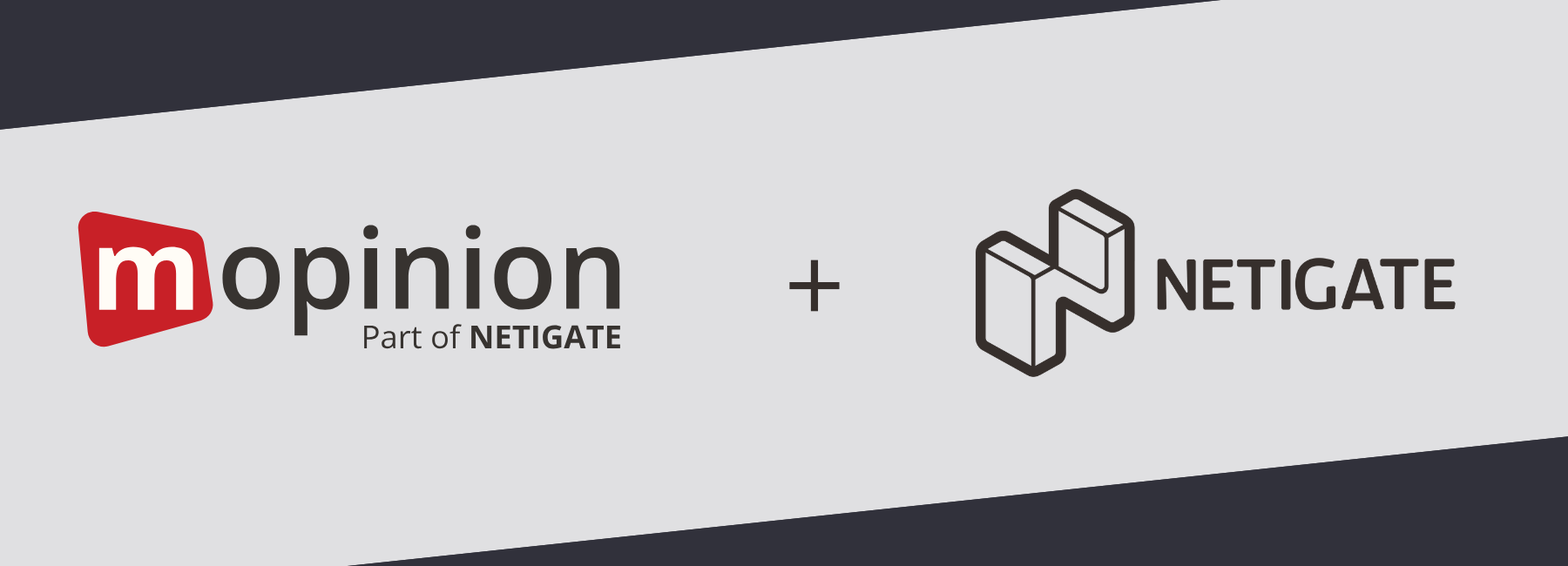What is a conversation? Typically, an exchange of sentiments, observations, opinions, or ideas, a conversation supplies social support. It establishes a connection between the participants. Unlike other, traditional methods of gathering insights, conversational surveys allow you to leverage the power of conversation. In this article, we’ve researched and outlined some best practices for leveraging conversational feedback.
Conversational marketing is a customer-centric and dialogue-driven approach to marketing. If you are setting out to try your hand at this kind of marketing, it is therefore essential that you ingrain a strategy with the customer in mind throughout every level of your campaigns. At least if you want to be able to see results. And we are guessing that you do.
Conversational marketing provides yet another opportunity to meet customers where they are in their buying journey. Done well, it drives value by delivering the right message at the right time, with the right information, to the right person. Martech
Last year, Mopinion released conversational feedback forms, or conversational surveys, in order to help you collect user feedback in a way that won’t disrupt but actually improve your CX, unlike a lot of traditional chatbots.
This is a branch of conversational marketing which allows marketers and digital professionals to capture feedback via a personalised experience that will leave your visitors feeling as though they were chatting with a colleague. Intrigued? Keep reading to discover the best practices for conversational feedback forms and surveys.
Let’s start at the start: What is a conversational survey?
Conversational surveys, or conversational feedback forms, help you collect insights from customers or users in a conversational matter. No surprise there! They can, for example, appear as a popup window on your website or app.
These kinds of conversational surveys are more relaxed in nature and are designed to enhance the user experience, rather than disrupt it.
Some of the biggest benefits of conversational feedback forms are:
- The conversational element helps you build both rapport and trust with your users or customers
- They typically have a higher response rate than traditional feedback forms as they are easier to fill out and feel more engaging
- It’s a user-friendly way of asking for feedback or providing help (like a redirection to customer service or FAQ pages)
- This more relaxed, responsive way of collecting feedback promotes an honest way of communicating
Your step-by step guide to conversational feedback:
1. Start smart: Set your goals
Like any other undertaking, you should start as you mean to go on. That means, begin your conversational survey strategy like any other project or campaign and start by clearly framing questions and setting achievable goals. Take a good long look at your target audience as well as your buyer or user personas and consider each one individually.
A good way to start might be to dive into your customer journey and try to pinpoint any points of friction. Put yourself in the shoes of a potential customer who landed on your homepage for the first time. Make a list of questions a visitor might have, and try to spot any flaws in your customer experience. Adding a conversational form to points of friction could help you to understand previously unexplained behaviours.
Rich Page, conversion optimisation expert, tells us,
In particular, you need to find out what your visitor’s main issues and barriers are, and then improve your website to eliminate those problems. A fast way of getting started with this is to create a short visitor survey that includes this question: ‘Is there anything stopping you from purchasing right now?’ This very important question will give you a gold mine of website improvement insights.
Ask yourself questions like,
- What are the main questions I am looking to answer?
- What are the key problems I’m trying to solve?
- Is this the best way to go about achieving my goal?
- What will keep visitors interested in engaging further?
Once you’ve set out clear goals, you can start thinking about your surveys.
Mopinion for CX Professionals
Drive customer-centricity across your entire organisation
2. Assemble your dream team
Like any other new endeavour, you’ll need the right people around you to support your vision. Let’s say that you’re trying to create a successful conversational survey that optimises your customer experience. This *most likely* requires stakeholders from key prospect and customer pillars to work together. You’ll need to identify which teams need to be involved in order for this effort to be successful.

Perhaps you want to share previously gated content, like downloadable white papers or data sheets. Or maybe you want your visitors to book a demo via your feedback form. Depending on the goal of your survey, and where you implement it, you could need quite a bit of support.
You might need your content team to help you with the copywriting and create the survey content, a brand manager to check the tone of voice or a sales or customer success representative to be linked to the responses to proactively engage with leads. Whatever the survey, you’ll probably need a few other stakeholders to be involved. Make sure that you put together the team you need in order to reach your goals!
3. Determine where and how to place your conversational surveys
Using your defined set of goals, determine where will you deploy your forms, and consider things like:
- Placement
- Timing
- Targeting
You can trigger conversational feedback forms across several pages for different uses. Take the time to really consider all the factors, and then begin creating your survey.
For example, you could use conversational surveys to capture leads by offering high-converting content, like whitepapers or e-books. Or by engaging with potential buyers on specific landing pages, while ensuring that existing customers are directed to the information or support they might be looking for. Managing multiple forms is easy enough once you take the appropriate steps to ensure they’re deployed in the right ways.

4. Infuse your conversational surveys with personality
After you’ve spent the appropriate time planning and laying out your goals, and how you want to target your forms, be sure to think about how you want to present yourself and/or your company. Consider things like tone of voice, how you want to be perceived, and what your audience expects. For example, in Mopinion’s Conversational Feedback forms, you can add a photo for the avatar to give a human touch.

If it suits your branding, don’t be afraid to infuse humour or a fun tone of voice to your survey. When used appropriately, in a content-specific manner, humour triggers an emotional response, and amplifies brand recall. This means it can increase open rates, engagement rates, and help buyers retain information for longer.
Bonus tip: Using emojis can boost your numbers! According to HubSpot, push notifications with emojis saw an 85% increase in open rates and a 9% bump in conversions. So, if it fits your brand identity, don’t be afraid to add in an emoji or two when communicating with your users.
Customer empathy, personalisation and human-interaction are all big CX trends this year, and it looks as though they’re here to stay. Conversational feedback surveys provide an opportunity to hit all of these trends with one touchpoint.
“When you infuse a brand’s personality into the chatbots it’s using, you can deliver more consistent messaging — and that can increase engagement. Chatbots don’t have to be “business only,” either — they can entertain people waiting for data to load or a human to respond. – MarTech
5. Beware of feedback fatigue
Ever heard of feedback fatigue? One mistake we see many people make with feedback surveys is that they bombard their visitors with several forms, with long-winded questions and no clear benefit for the users. These are the forms that receive little to no responses. You have to step into the visitor’s shoes and ask yourself why would I engage with this form?
Nobody likes to visit a website or log onto an app only to be bombarded with multiple feedback requests and pop-ups. Let alone the standard cookie request or any other notification you may have running.

An easy solution is to create a conversational survey form that works as a sophisticated chat playbook. It covers common questions and proactively engages prospects to start the sales conversation. Asking a direct but simple question early on, such as, ‘Are you a Mopinion user?’ (in our case) helps to gauge the visitor’s intent. You can create flows relevant to each answer or pathway. This means that you can identify the visitor’s goals and send them in the right direction early on in the form.
For example, Mopinion customer de Bijenkorf uses a side menu with different options, including chat, FAQ’s and a standard feedback form, so visitors are not bombarded with too many options. This way, they can direct the right visitor to the right place.

6. Analyse your feedback data: Measure, optimize & iterate
One thing you can always count on in any campaign is the need to measure the performance and be able to pivot and optimise for the best results, or conversions. Think about it like this: every conversation is a conversion.
With conversational forms, you’ll be able to gauge your visitor’s experience, and more than likely this will come with many important takeaways. So, once you have analysed the conversations, you will start to notice trends. Take note, and then take action with the feedback you receive. There’s absolutely no point in spending all this time creating conversational feedback surveys if you’re going to ignore all the insights and valuable feedback you get. Use your dream team to help you with this.

Example of a conversational feedback form from Dutch retailer Etos.
These trends will become guidelines for helping you to provide better support and solve your audience’s problems. All while nurturing and mining user intent to create a competitive advantage and deliver a better digital experience. So, make sure you take action with the feedback you receive and incorporate it into every level of your organisation.
Go on, give it a go
Well, there you have it. Conversational surveys are very easy, and actually, quite fun to use. You don’t have to worry about training team members to use a new software with complex coding, as teams can leverage conversational feedback forms independently, without the help of their development team.
With Mopinion’s conversational surveys, you can use classic survey elements like NPS and CSAT to gauge how your customers are feeling. Let alone all the other great features unique to conversational feedback. Really, the possibilities are endless. From lead capturing to customer engagement, conversational surveys allow you to go beyond metrics, build trust and gain a deeper understanding of your respondent. But only, if you do it in the right way.
Ready to see Mopinion in action?
Want to learn more about Mopinion’s all-in-1 user feedback platform? Don’t be shy and take our software for a spin! Do you prefer it a bit more personal? Just book a demo. One of our feedback pro’s will guide you through the software and answer any questions you may have.






